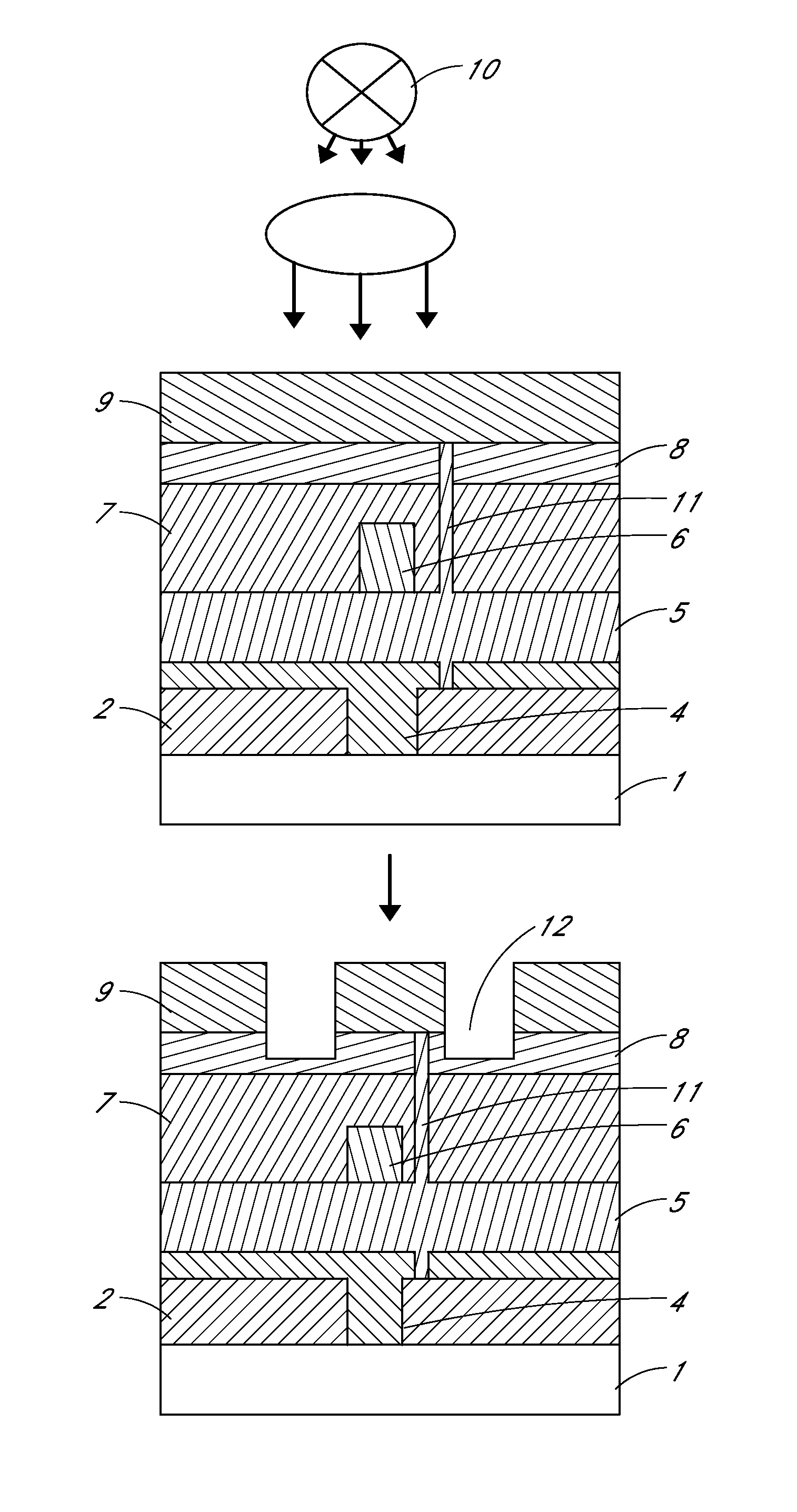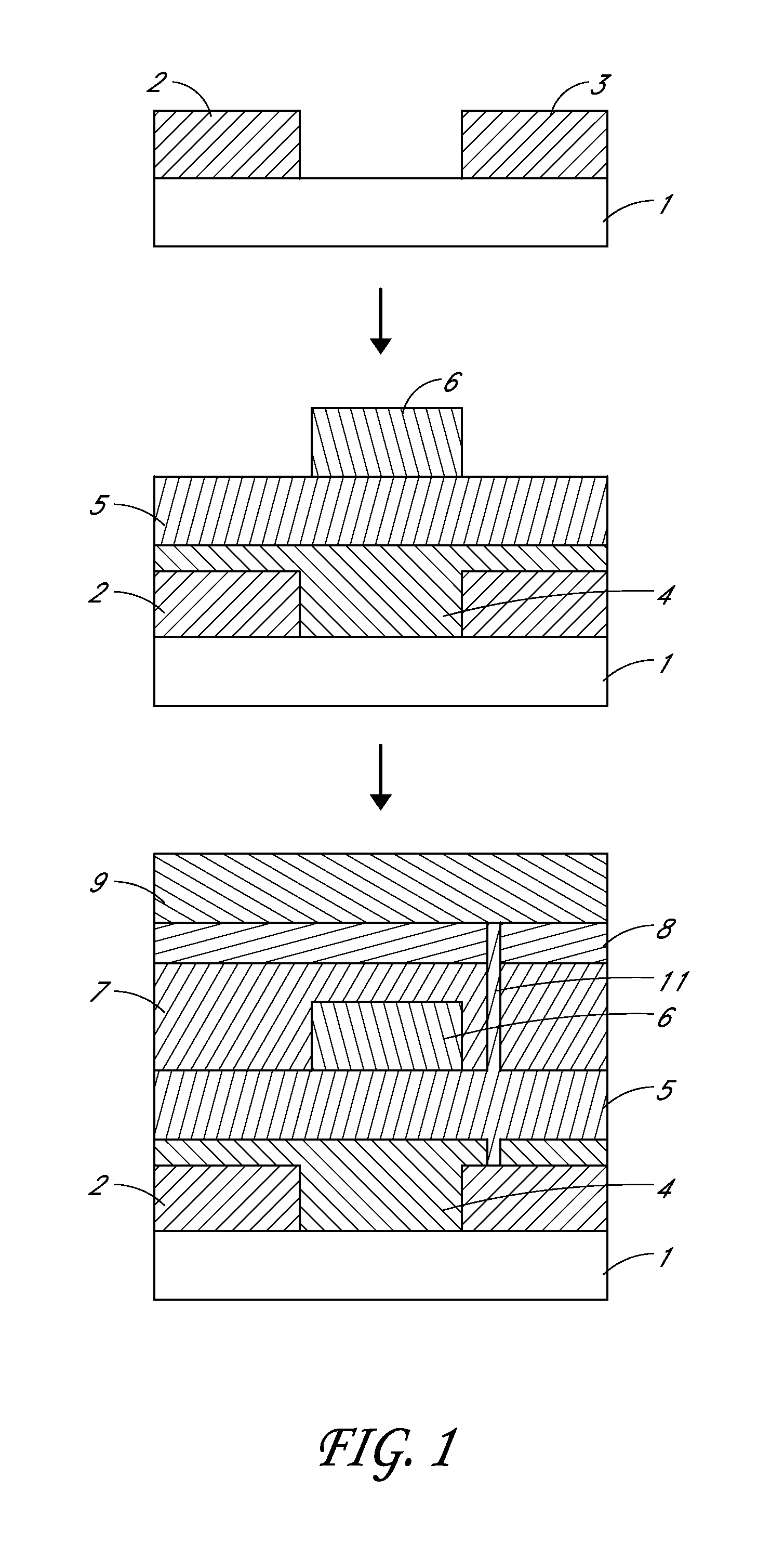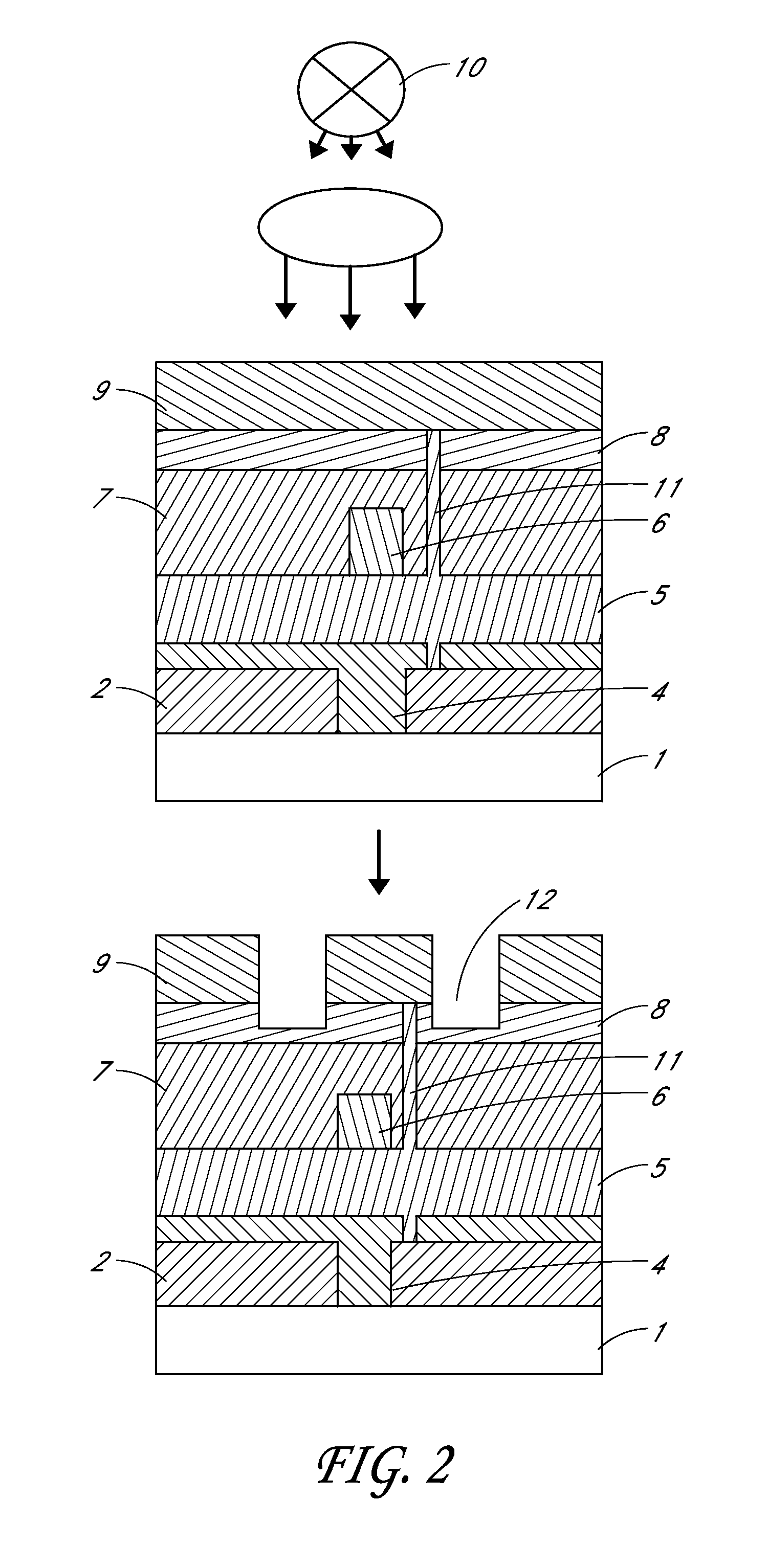Electrode patterning
a technology of electromechanical patterning and electrodes, which is applied in the manufacture of electromechanical systems, cold cathode manufacturing, electric discharge tubes/lamps, etc., can solve the problems of low aperture ratio, limited display area, and reduced aperture ratio, so as to avoid degradation of the underlying structure and reduce laser energy
- Summary
- Abstract
- Description
- Claims
- Application Information
AI Technical Summary
Benefits of technology
Problems solved by technology
Method used
Image
Examples
example 1
Direct-Write Patterning of Top Conductive Electrode
[0049]The fabrication of a multi-level (or -layer) stack for polymer-based printed TFTs according to a conventional method is illustrated in FIG. 1. Conductive material is deposited and patterned on a substrate 1 to form source and drain electrodes 2. The substrate may be either glass or a polymer film, but preferably a plastic substrate such as polyethyleneterephtalate (PET) or polyethylenenaphtalene (PEN) is used. The patterned conductive layer 2 comprises a conducting polymer, such as PEDOT, or a metallic material, such as gold or silver. It may be deposited and patterned through solution processing techniques such as, but not limited to, spin, dip, blade, bar, slot-die, or spray coating, inkjet, gravure, offset or screen printing, or evaporation, and photolithography techniques.
[0050]Once the conductive layer has been patterned to form the source and drain electrodes, a layer of semiconducting material 4 may then be deposited ov...
example 2
Patterning of the Top Conductive Layer Using a Light Absorbing Layer
[0057]FIG. 2 illustrates a first embodiment of the present invention. In this and later examples like elements to those of FIG. 1 are indicated by like reference numerals. The top conductive layer for the pixel electrode is defined by the division of conductive layer to produce separate electrode pads on a polymer surface, and therefore creating devices with mutually isolated pixel electrode lines. An insulating wetting layer 8, which contains a dye, that absorbs IR radiation, is deposited on top of the second dielectric 7. The material of the insulating layer may be deposited from solution in the form of a continuous layer using techniques such as, but not limited to, spincoating, ink-jet printing, spray-coating, roller coating spray or blade coating. However, preferably, the technique of spray coating is used. As stated above for the dielectric layers, this insulating layer is deposited in such a way so as to inhi...
example 3
Patterning of Top Conductive Layer by Using an Optically Thick Dielectric Layer and Infrared Light
[0066]FIG. 6 illustrates a variant of a process based on the first embodiment wherein the IR absorbing moiety is added to a thick dielectric material. The second dielectric layer 7, which has an added moiety which absorbs IR radiation, is deposited on top of gate interconnect 6. The material of the second dielectric layer may be deposited from solution in the form of a continuous layer using techniques such as, but not limited to, spincoating, inkjet printing, spray-coating, roller coating spray or blade coating. However, preferably, the technique of spray coating is used. The dielectric material may also be deposited using vapour phase deposition techniques like evaporation or chemical vapour deposition. As is described above for the first embodiment, and is referred to in WO01 / 47043, the material of the dielectric layer is preferably deposited in such a way so as to inhibit degradatio...
PUM
| Property | Measurement | Unit |
|---|---|---|
| thickness | aaaaa | aaaaa |
| thickness | aaaaa | aaaaa |
| optical density | aaaaa | aaaaa |
Abstract
Description
Claims
Application Information
 Login to View More
Login to View More - R&D
- Intellectual Property
- Life Sciences
- Materials
- Tech Scout
- Unparalleled Data Quality
- Higher Quality Content
- 60% Fewer Hallucinations
Browse by: Latest US Patents, China's latest patents, Technical Efficacy Thesaurus, Application Domain, Technology Topic, Popular Technical Reports.
© 2025 PatSnap. All rights reserved.Legal|Privacy policy|Modern Slavery Act Transparency Statement|Sitemap|About US| Contact US: help@patsnap.com



